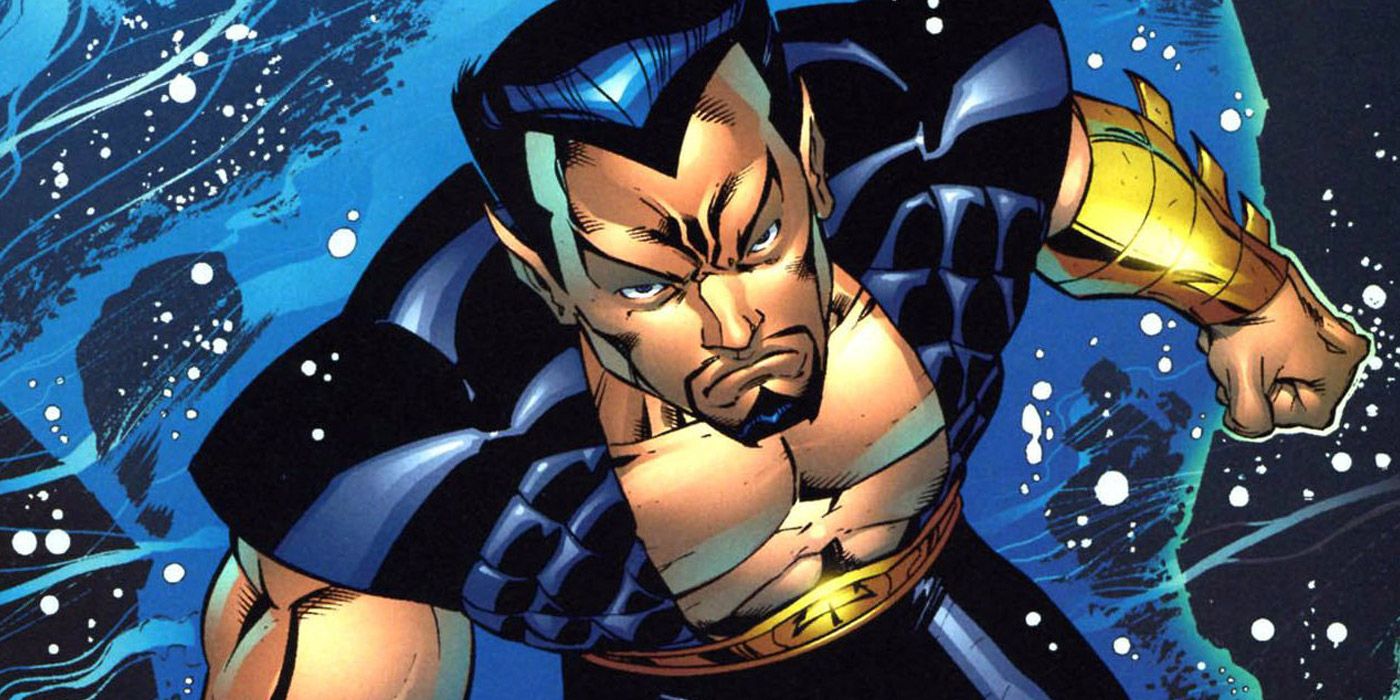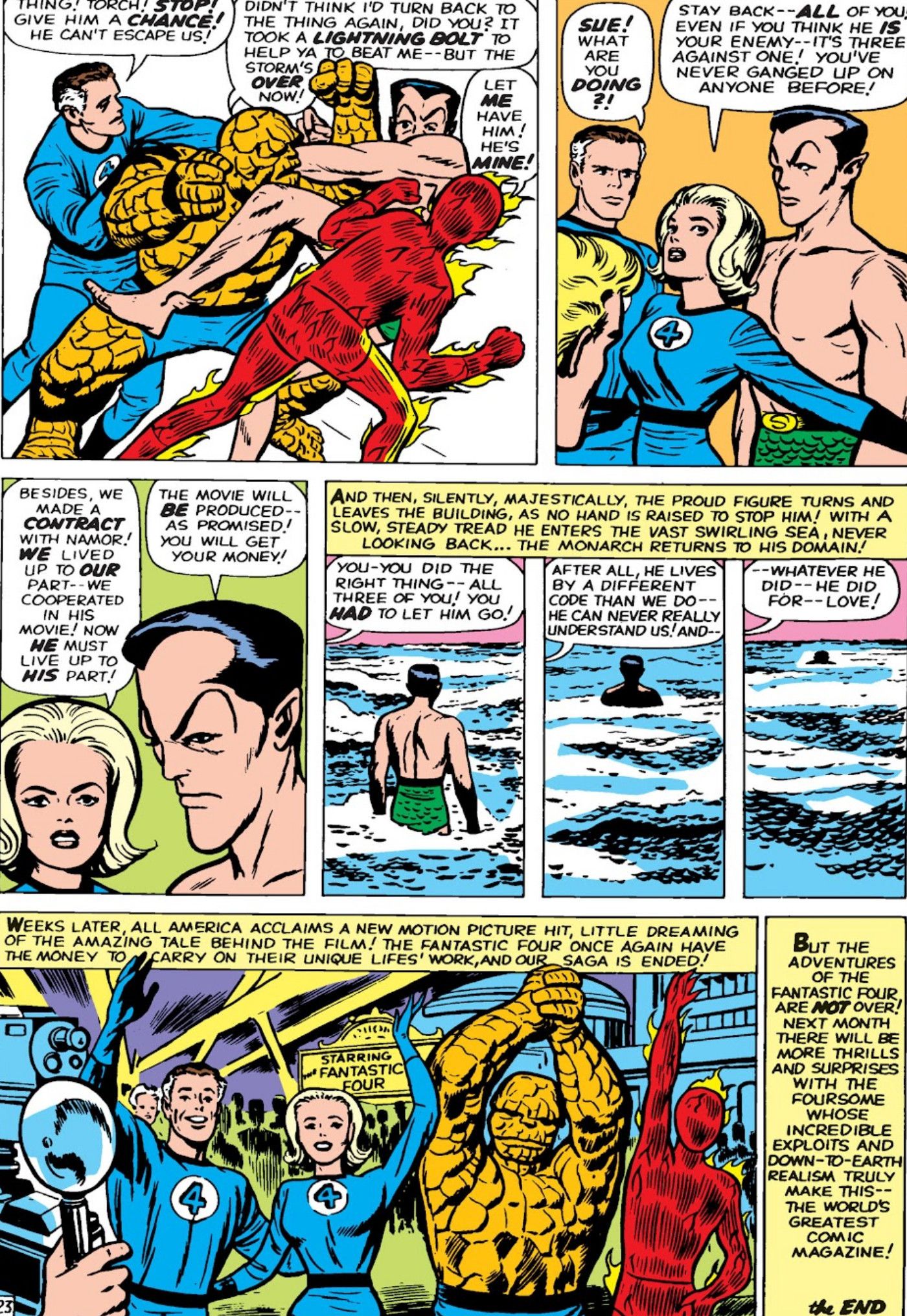If not for the secret support of Namor the Sub-Mariner, The Fantastic Four may not exist. Marvel’s First Family and Namor have had a tense and at times adversarial relationship, but early in the Fantastic Four’s career, in 1962’s Fantastic Four #9, he gave the team the financial boost they desperately needed. This move ensured the team lived to fight another day; it also demonstrated, early on, that Namor had noble and honorable tendencies. The issue was written and illustrated by the legendary team of Stan Lee and Jack Kirby.
Namor is one of Marvel’s oldest characters, stretching back to the very first title the company published: 1939’s Motion Pictures Funnies Weekly. The surly and haughty Namor became a popular fixture of comics’ Golden Age, but faded into obscurity as the era came to an end. Lee and Kirby revived Namor early in the Marvel Age of Comics, reintroducing him as a villain in 1962’s Fantastic Four #4. From there, Namor would menace the Fantastic Four on several occasions, even allying himself with Doctor Doom two issues later.
In Fantastic Four #9 by Stan Lee and Jack Kirby, Namor returned with another scheme to end the team, but instead he ended up becoming their savior instead. Deep in his undersea lair, Namor learns the Fantastic Four are facing bankruptcy and are in danger of splitting up. Namor decides to make his move. As the Fantastic Four debate their future, they receive an offer: appear in a forthcoming motion picture, and they will make enough money to stay afloat. Seeing no other option, the team heads for Hollywood; upon their arrival, they learn the movie studio is owned by Namor, who gathered enough undersea treasure to purchase the company and make a film. As production on the film commences, Namor’s plan comes into focus: he has laid traps for Mister Fantastic, the Human Torch and the Thing, keeping the Invisible Woman separate. The three are able to fight their way out of Namor’s traps, and when they confront him at his lair, the Invisible Woman admonishes them not to gang up on Namor. Sue tells her teammates they lived up to their end of the bargain, and now Namor will honor his side. The film is produced, and is a smash hit, giving the Fantastic Four a much-needed financial boost.
Namor plays by his own code, a fact the Invisible Woman notes at issue’s end, and his actions in the story prove it. Namor originally sought to crush the Fantastic Four with his “movie”, but after they outsmarted and outmaneuvered him, he made good on his word to create the film. Namor’s “movie” provided the team with a financial windfall, one that allowed them to keep their headquarters in the Baxter Building and kept their many fantastic inventions from being sold on the auction block. This was not Namor’s intention when he set out on this scheme, but by honoring his agreement, it showed he had morals and a code of ethics–no matter how dubious they may be.
There is no doubt some of Namor’s actions were motivated by his romantic feelings for Sue Storm, but he was in no way bound to keep his agreement; nevertheless, Namor conceded defeat and in the process, secretly secured the Fantastic Four’s existence for years to come.


